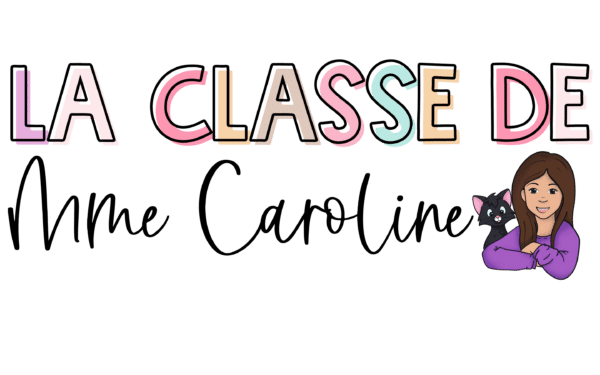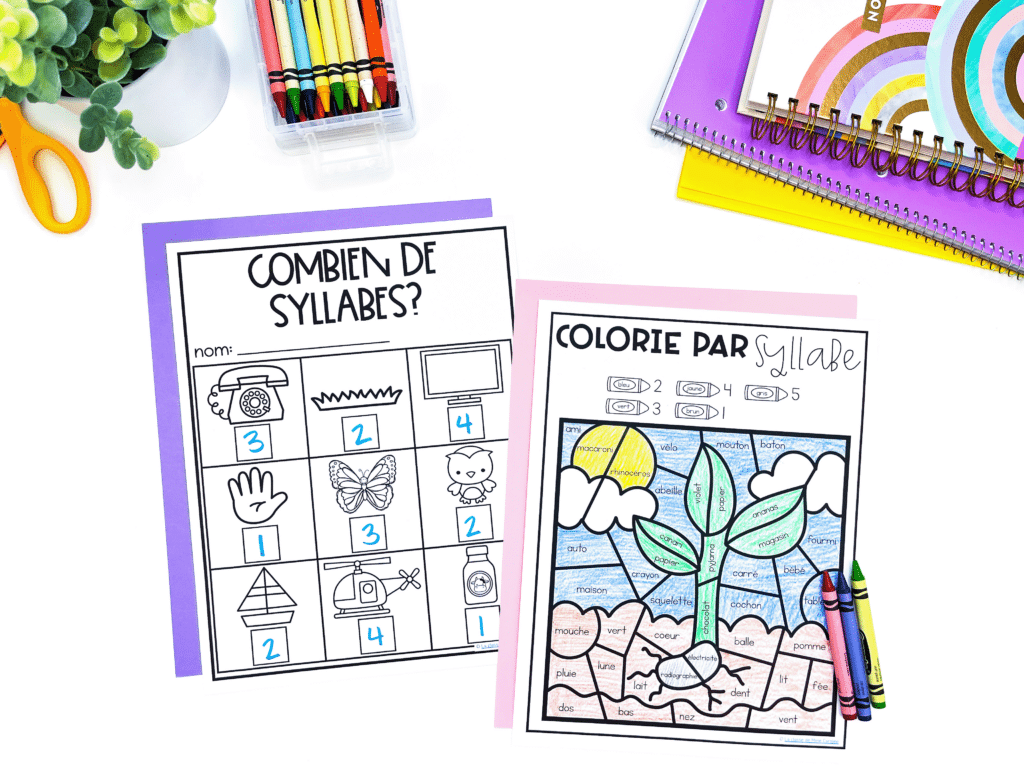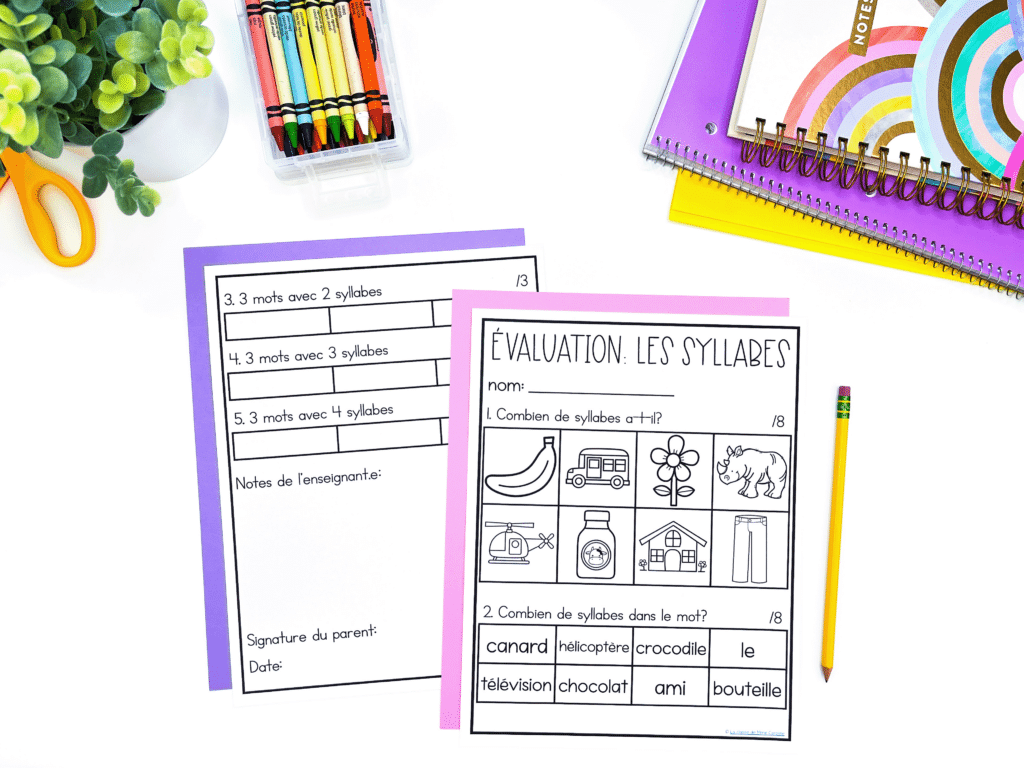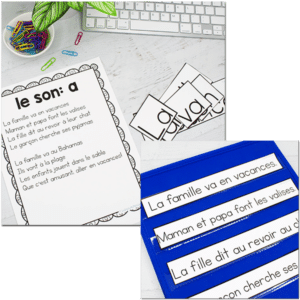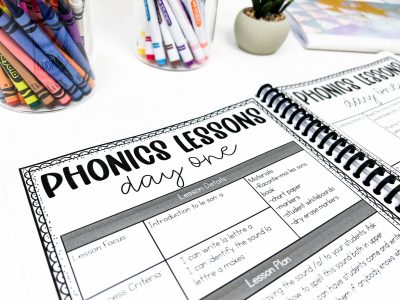Ever found yourself struggling with how to teach French syllables to your students? Well, you’re not alone! The world of syllables can sometimes feel like a linguistic maze, but fear not, because I’ve got your back.
Practicing how to read French syllables is important. It helps students learn basic decoding skills (CV sounds) and gives them the tools they need in order to progress in their French reading. In this blog post, I’m going to share 10 French syllable activities to make teaching phonological awareness fun and engaging.
French Syllable Activities to do with your Whole Class:
Songs: The first thing we do is we practice singing a CV syllable song. Here is a link to the song on YouTube. We practice this song with all sorts of different consonants. When my students get comfortable with this, we move on to reading syllables written on the board without the song.
Morning Message: Practice reading syllables during your morning message. Start simple, by reading French syllables with the same consonant in alphabetical order (e.g., ma, me, mi, mo, mu, my). When they have that down, move on to using the same consonant but with the vowels not in alphabetical order (e.g., my, ma, mi, me, mu, mo) and then finally onto random CV combinations (e.g., le, ti, mo, na, jy, etc.).
When my students are comfortable with that, we start doing two syllables together with the same CV combination (e.g., baba), then we do the same consonant, but different vowel (e.g., bobu) and finally we do random combinations (e.g., nila)

Clapping Syllables: Practice segmenting words into syllables by clapping the syllables. Use both nonsense words and real words to help your students work on this important skill. Once they’ve mastered this, then start getting them to count the syllables. This is a great oral activity to work on French syllables.
Segmenting and Blending Syllables: Write words on the board. You can use both real words and nonsense words for this activity. Say the word out loud with your class, then choose a student to draw semi-circles under the word to show the syllable breakdown. Next, read the segments, and then blend the word back together. You can also do the opposite of this activity. Write the syllables on the board, and have them blend them together (e.g., po + mme = pomme).
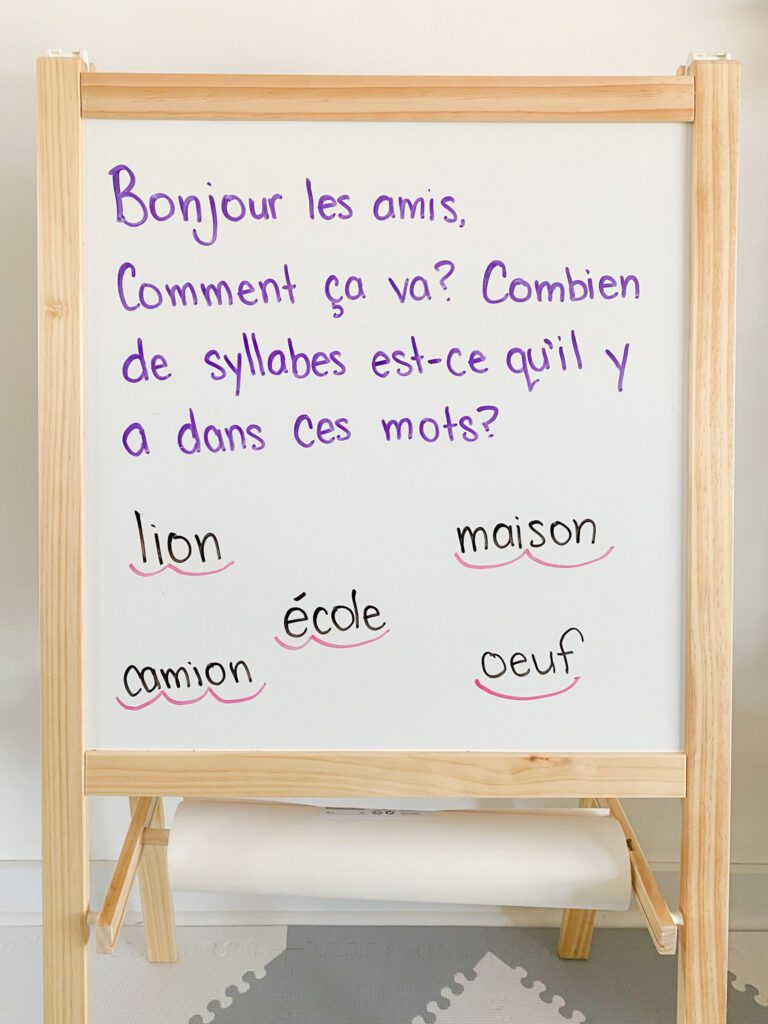
Sorting: Once your students are comfortable identifying how many syllables are in a word, you can have your students sort them. This French syllable activity is great to do as a whole-class, as well as in small targeted groups. Read a word and have students tell you how many syllables it has, then have them put the word in the right spot. I love doing this activity in a pocket chart, but you can also attach magnets to the words and sort them on your board.
Small-Group Activities That Focus on French Syllables:
Flip Book: I created a simple CV flip book to use with during small-group learning. All you need is a notebook with the pages cut in half (not all the way through to the end of the book). Write vowels on the right side and consonants on the left side. Then flip through it and have students read syllables at random. This is also a great activity for students to bring home for extra practice! You can also create more complex books with 3 or 4 letters. You can also include compound sounds if you’ve covered them!
If your students are beginners, start with consonants that make continuous sounds, like /m/ or /s/. These sounds are easier to try to blend when learning how to read. Once they’ve mastered those, you can move onto the plosive sounds, like /p/ and /t/ and finally move onto the complex consonants, like /x/.
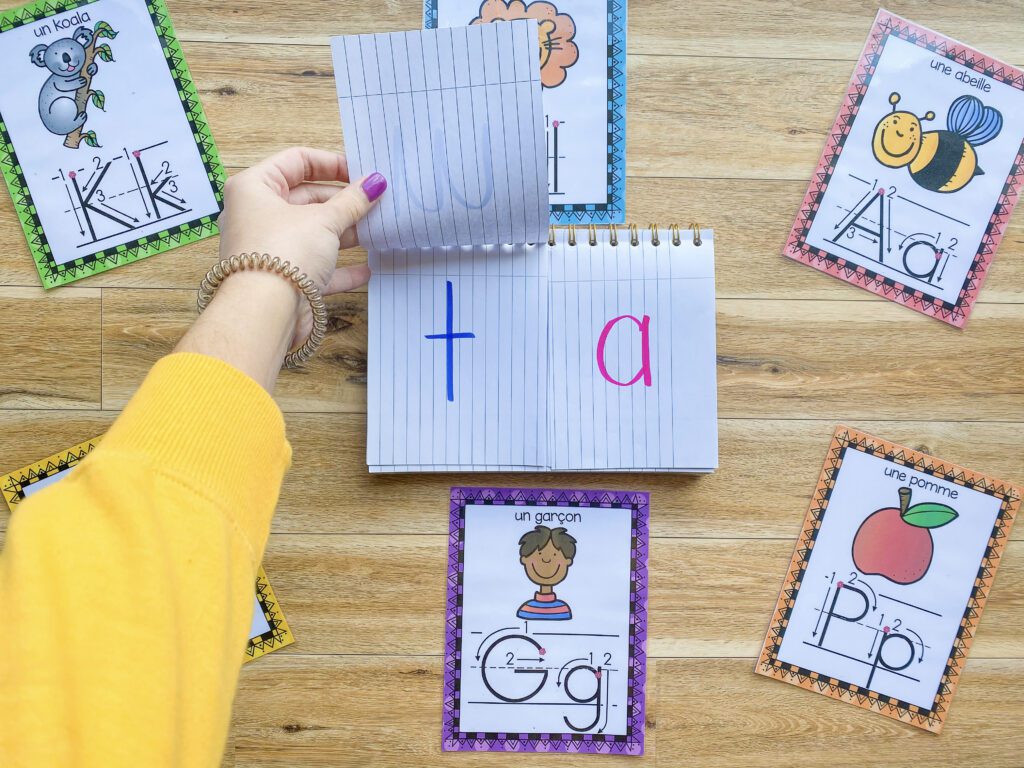
Real word reading: Once your students have mastered reading French syllables using the flip book described above, practice reading decodable words. Your students likely won’t be able to decode compound sounds yet, so focus on words with only consonant and vowel sounds like papa, dos, bébé, etc.
Bingo: Using the bingo sheets found in this bundle, your students can practice counting syllables. The bingo sheets are filled with numbers, and when a word is said out loud, students need to count the number of syllables in the word and cover the right number. Students always love playing bingo, so this is a really great way to practice counting syllables in an engaging way.
French Syllable Activities to do Individually:
Boom Learning: French boom cards are a great, interactive way to work on French syllables. The cards are self-correcting, so they’re the perfect independent activity and the best part? No marking involved for you! I’ve created boom card packs that work on counting syllables in various words. The packs have images, not words so they’re ideal to use with students who aren’t reading yet.
Worksheets: Finally, worksheets are a great way to practice everything you’ve taught them. They’re perfect for independent learning time, and the worksheet pack I created comes with such a large variety of activities that will keep your students engaged. They practice all the skills that you will have worked on by now in your whole-group and small-group learning. You can get a great idea of how students have grasped the concept by having them work on these French syllable activities independently.
French Syllable Assessment
At the end of your unit, you should do an assessment to see which of your students have mastered the concept and which ones need more practice. As long as most of your class has grasped the concept, you can move on to the next skill during your whole-group lessons. Use your small groups to do targeted practice with your students who are having more difficulty. Need a French syllable assessment? You can grab one in my worksheets pack here.
After your students have mastered blending and segmenting syllables, it’s time to move on to teaching them about French rhymes, which is the next French phonological awareness skill.

